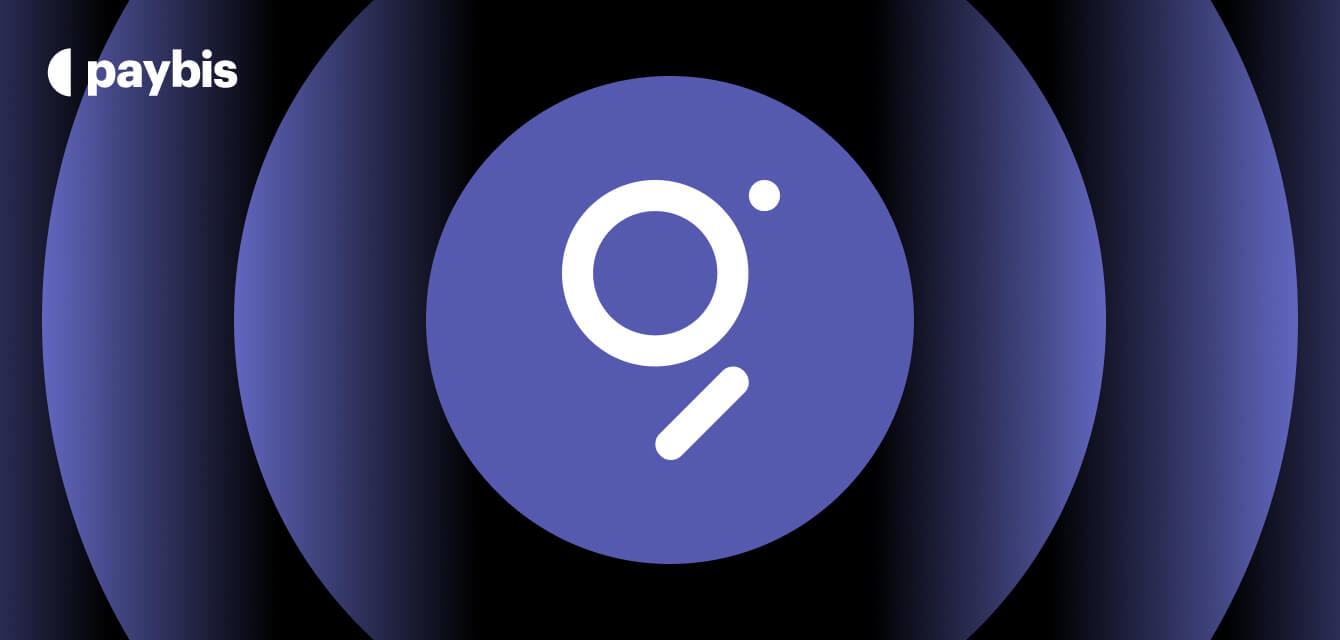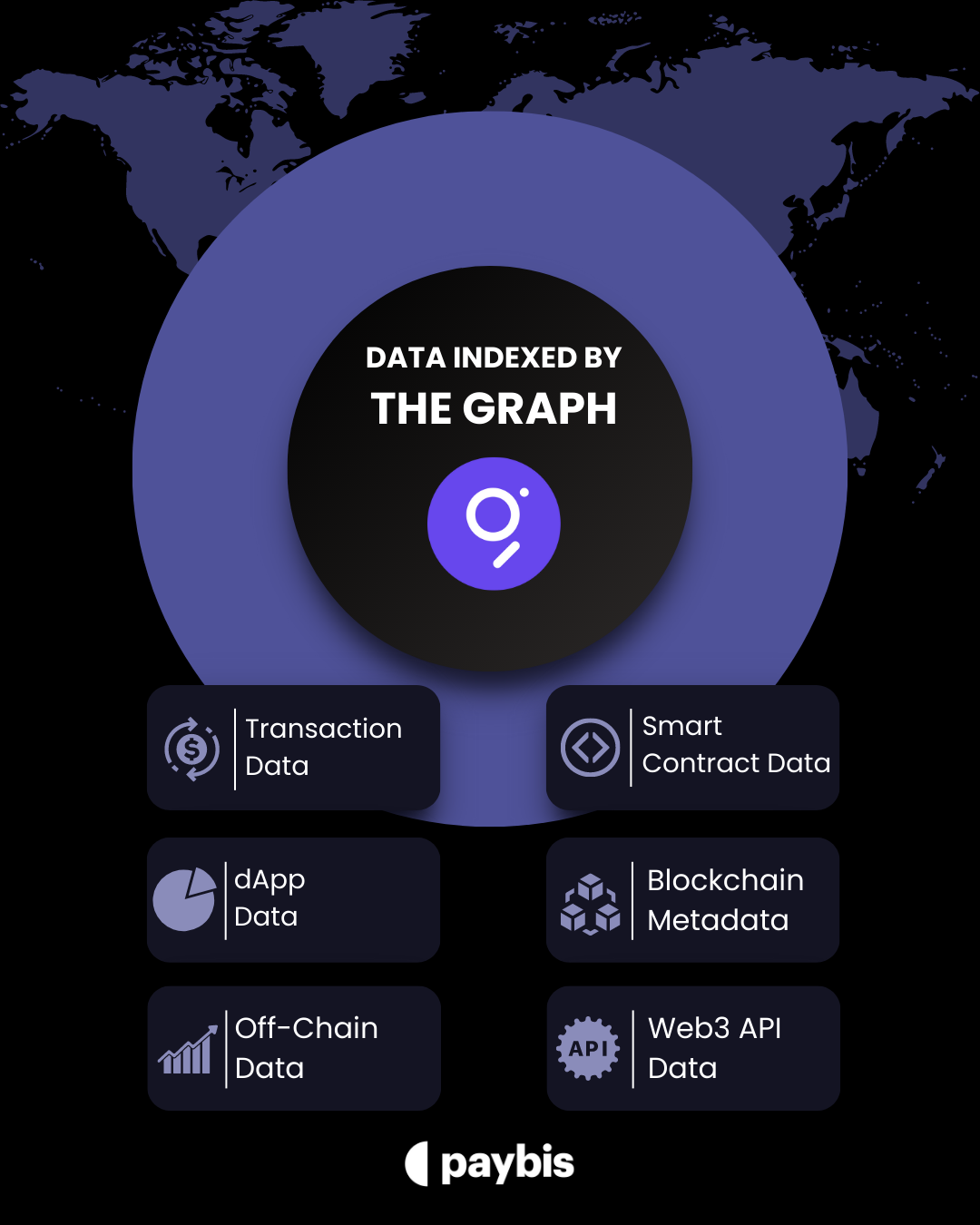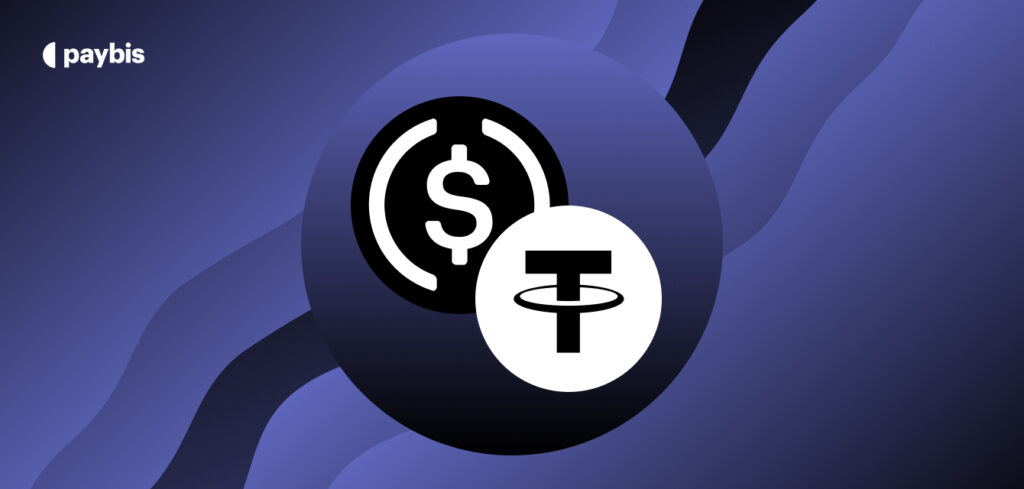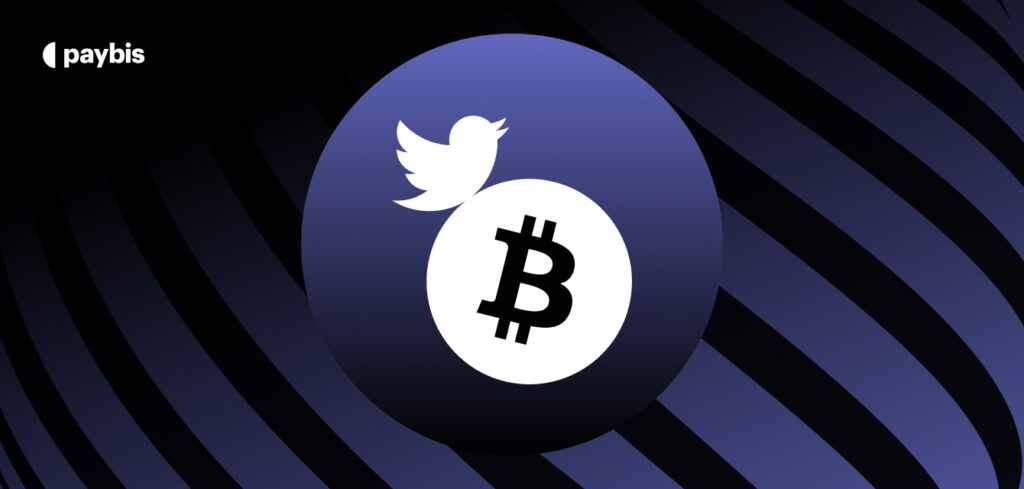What Info is Indexed by The Graph?
In the wave of AI, web3, and data engineering, there is one project that is right at the center — The Graph.
The Graph is a decentralized data indexing and query protocol designed to help developers build decentralized applications (dApps). The Graph helps to make it easier for developers to access, store, and query data from the Ethereum mainnet and other solutions built atop Ethereum.
To better understand why the space needs a protocol like The Graph, we must discuss the need for data indexing and querying in web3.
This article will discuss the importance of indexing information, the purpose of The Graph, and what information is indexed by The Graph.
Table of contents
Why Do You Need a Data Indexing and Querying Protocol?
The need for an indexing and querying protocol arises from the increasing volume and complexity of data in various domains. That includes search engine queries, databases, social networks, and other information retrieval systems.
An indexing and querying protocol lays the foundation by providing a standardized framework and set of rules for organizing, storing, and retrieving data efficiently.
Below are a few reasons why an indexing and querying protocol is important.
Clean Data Organization
Public blockchains produce large amounts of data. Many being open-source, most of this data is very unorganized and unstructured. Therefore, it is crucial to organize and structure blockchain data in a way that facilitates efficient storage and retrieval for your dApp to work effectively.
An indexing protocol defines how data is structured, stored, and linked, enabling quick and easy access to relevant information.
Faster Data Retrieval
Indexing allows for faster retrieval of specific data items or subsets of data. By creating indexes on specific attributes or keys, the querying protocol can quickly locate relevant data and reduce the time needed to retrieve it.
Reduced time to retrieve data to display or execute other functions greatly improves the overall user experience of a dApp.
Improved Search Performance
Indexing and querying protocols in decentralized search engines play a crucial role in providing fast and accurate search results.
Indexing helps create an inverted index, which maps keywords to the documents or web pages containing them. Querying protocols, such as ranking algorithms, help determine the relevance and order of search results, improving search performance.
Data Handling At Scale
As data grows exponentially, efficient indexing and querying protocols are necessary to handle large-scale datasets. Protocols like The Graph ensure the system can handle increasing amounts of data without sacrificing performance or response time.
Effective Data Integration
In many applications, data comes from multiple sources and needs to be integrated for meaningful analysis. An indexing and querying protocol can define a common structure and language for data integration, allowing disparate datasets to be queried and analyzed together seamlessly.
Ad Hoc Queries
Data on blockchains are not human-readable. At its core, the data is a bunch of 1’s and 0’s. Indexing and querying protocols allow users to perform ad hoc queries, allowing them to search for specific information based on their immediate needs through plain English (or any other language).
Such flexibility and ease of querying empower users to explore data in real time, leading to better decision-making and insights.
Standardization for Interoperability
Most of the blockchain ecosystem is siloed, with each network operating with its own set of rules and standards.
By establishing a standardized indexing and querying protocol, different systems, and platforms can communicate and exchange data more effectively. This promotes interoperability and compatibility between various software applications and databases.
What Info Is Indexed By The Graph?
By indexing information in a standard format, The Graph enables quick access to data stored across the Ethereum ecosystem.
Below are a few examples of the kind of information indexed by The Graph.
- Transaction data
- Smart contract data
- Decentralized application (dApp) data
- Metadata
- Off-chain data
- Data from web3 APIs
Note that this is not an exhaustive list.
Transaction Data
The Graph indexes Ethereum transaction data by creating a mapping of transactions and related information. This allows developers to query the chain for specific transactions and retrieve relevant details such as sender and receiver addresses, amounts transferred, gas used, etc.
Smart Contract Data
The Graph also indexes smart contract data such as application logic, state variables, function calls, and more. This helps developers to access smart contract data in a structured format, making it easier to analyze and query the blockchain.
Decentralized Application (dApp) Data
The Graph protocol helps developers by indexing dApp-specific data such as user profiles, account balances, order books, etc. This allows developers to query for specific user data, which can be used to build various features into their dApps.
Metadata
The Graph can index various metadata associated with blockchain data. This includes schema information, which defines the structure and relationships of data within a blockchain network. Additionally, metadata can include provenance (origin and history) and quality information, which helps ensure the accuracy and reliability of indexed data.
Off-chain Data
While blockchains primarily store data on-chain, the relevant information is also stored off-chain. The Graph can index off-chain data such as web APIs and other external sources to help developers access off-chain data in a structured format that is easily queryable.
Data from Web3 APIs
The graph provides open APIs called Subgraphs, which allow developers to index and query data from web3 applications. Subgraphs define a schema that defines the structure and relationships between data points within the subgraph. By defining this schema, developers can easily query web3 APIs for relevant information to use in their dApps or other applications.
What is GRT Token?
At the heart of The Graph ecosystem is the native GRT token. The Graph cryptocurrency is used to power various aspects of The Graph network, such as security and incentivization for indexers and curators.
Get The Graph price here.
There are 5 main functions of GRT in The Graph ecosystem:
- Governing the protocol
- Rewarding for indexing and querying
- Curating Subgraphs
- Delegating stake
- Paying query fees
Governing the Protocol
GRT crypto holders have the ability to participate in the governance of The Graph network. They can propose and vote on protocol upgrades, parameter changes, and other decisions that shape the direction of the protocol.
Rewarding for Indexing and Querying
GRT is used to reward indexers and curators for their contribution to the network. Indexers are rewarded for hosting and maintaining data on The Graph, while curators are compensated for organizing Subgraphs and helping them reach maximum usage.
Curating Subgraphs
Curators are responsible for managing Subgraphs. They ensure that the data in Subgraphs are valid and up to date, while also promoting their use within the network. By staking GRT tokens, users can act as curators and become responsible for the maintenance and quality of Subgraphs.
Paying Query Fees
The GRT crypto token is used to pay query fees for the execution of queries on The Graph network. This helps maintain network security by preventing malicious actors from flooding the system with requests. It also ensures that resources are allocated fairly among users.
Delegating Stake
GRT holders can also delegate their tokens to Indexers, allowing them to earn a portion of the indexing rewards generated by the delegated stake. This mechanism encourages active participation and decentralization within The Graph network.
So, what do you earn for delegating grt to an indexer?
What Do You Earn for Delegating GRT to an Indexer?
Delegating GRT to an Indexer makes you eligible to receive a portion of the indexing rewards generated by the delegated stake.
This reward structure is determined by the Indexer and varies from one Indexer to another. Generally speaking, rewards can range anywhere from 3-20% depending on the delegation period and other factors.
You can browse through all 300+ Indexers here.
Here’s a breakdown of what you can earn by delegating GRT:
- Delegation Rewards: By delegating GRT to an Indexer, you become a delegator. Delegation rewards are a portion of the indexing rewards earned by the Indexer based on their performance in the network. The exact reward distribution mechanism may vary depending on the specific parameters set by the Indexer.
- Indexing Rewards: Indexers play a crucial role in The Graph network by indexing and providing access to data. They are rewarded with a share of the query fees paid by users when querying data indexed by their nodes. As a delegator, you receive a portion of the indexing rewards generated by the delegated stake proportionate to your delegation.
- Shared Indexer Revenue: In addition to delegation rewards, some Indexers may offer additional incentives to their delegators. This can include sharing a percentage of the revenue they earn from their indexing services, providing an extra benefit to delegators.
It’s important to note that the specific reward structure and rates can vary between different Indexers. When choosing an Indexer to delegate your GRT to, you should consider factors such as their performance, reputation, fee structure, and any additional rewards or incentives they offer.
To participate in delegation and earn rewards, you need to hold GRT in a compatible wallet and delegate your tokens to an Indexer using the delegation functionality provided by The Graph’s ecosystem. The process for delegating GRT may involve interacting with a user interface or smart contracts depending on the chosen delegation platform.
By delegating GRT to an Indexer, you contribute to the security and decentralization of The Graph network while potentially earning rewards for your participation and support.
Visit GRT to USD converter to convert The Graph tokens to fiat currency.
How To Use The Graph?
To use The Graph, follow the steps below to create and deploy a subgraph using Subgraph Studio.
Alternatively, follow the detailed quick start guide on The Graph’s website.
Create a Subgraph on Subgraph Studio
Go to the Subgraph Studio website at https://thegraph.com/studio/.
Connect your wallet (e.g., MetaMask) to the Subgraph Studio platform to access your Ethereum accounts.
Install the Graph CLI
Install the Graph Command Line Interface (CLI) tool on your local machine. The CLI is a development tool used to interact with The Graph network.
Instructions for installing the Graph CLI can be found in the official documentation provided by The Graph.
Initialize Your Subgraph
Use the Graph CLI to initialize a new subgraph within your project directory. This command sets up the necessary files and folder structure for your subgraph.
Write your Subgraph
Within the subgraph directory, write the necessary code in the subgraph manifest (subgraph.yaml) and the mapping file (mapping.ts).
The subgraph manifest defines the data sources and schema, while the mapping file specifies how to handle and index the data.
Deploy to the Subgraph Studio
Use the Graph CLI to deploy your subgraph to the Subgraph Studio. This allows you to test and interact with your subgraph in a development environment.
Test Your Subgraph
Once deployed, you can test your subgraph by performing queries on the Subgraph Studio platform. This allows you to verify that your subgraph is correctly indexing and returning the desired data.
Publish Your Subgraph to The Graph’s Decentralized Network
When you are satisfied with your subgraph’s functionality and testing, you can publish it to The Graph’s decentralized network.
Use the Graph CLI to deploy your subgraph to the appropriate network (e.g., Ethereum mainnet or a testnet). This makes your subgraph available to other developers and users.
Query Your Subgraph
Once your subgraph is deployed to the decentralized network, you can query it using GraphQL queries. These queries can be sent to the subgraph endpoint to retrieve specific data from the indexed blockchain or dApp.
Conclusion
The Graph is a powerful decentralized platform designed to make it easier for developers to access and query blockchain data.
GRT tokens are essential to the functioning of The Graph network, enabling users to participate in indexing, delegating stake, and paying query fees. By delegating their tokens to Indexers, users can become eligible for rewards while contributing to the security and decentralization of The Graph network.
The Graph provides a suite of tools that makes it easy for developers to create, deploy, and query subgraphs on the decentralized network. By following the instructions above, anyone can quickly get started with developing on The Graph.
If you want to participate in The Graph ecosystem as an investor, developer, or token holder, check The Graph calculator to buy today.
At Paybis, we are constantly scaling our portfolio. You can buy popular cryptocurrencies like BTC and ETH without KYC right away.
FAQs
What is The Graph in blockchain?
The Graph, in the context of blockchain, refers to an indexing and querying protocol designed to provide efficient and decentralized access to blockchain data. It is a decentralized network and ecosystem that allows developers and users to query and retrieve specific information from various blockchains and decentralized applications (dApps).
What is The Graph protocol used for?
The Graph is used to solve the problem of data access and retrieval on blockchains, which typically store large amounts of data in a decentralized and distributed manner. The protocol enables developers to create subgraphs, which are modular data schemas that define the structure and indexing rules for specific subsets of blockchain data.
What does GRT token do?
The Graph token (GRT) plays a critical role in aligning incentives, facilitating governance, and ensuring the efficient operation of The Graph protocol. It enables participants to contribute to the network’s indexing infrastructure, curate data, govern the protocol’s direction, and potentially earn rewards for their active involvement in the ecosystem.
Who invested in The Graph?
According to Crunchbase, The Graph has raised over $69 million across 7 funding rounds from 28 investors including the likes of Blockwall, Launch Code Capital and FinTech Collective.
Disclaimer: Don’t invest unless you’re prepared to lose all the money you invest. This is a high‑risk investment and you should not expect to be protected if something goes wrong. Take 2 mins to learn more at: https://go.payb.is/FCA-Info




